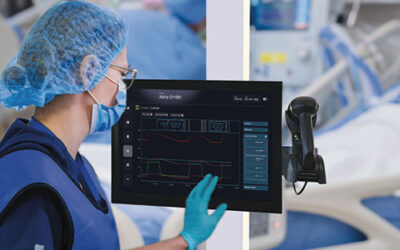If you’re new to the idea of telemedicine, it may seem intimidating at first glance. Knowing what telemedicine devices and technologies you need, as well as how to integrate them into your practice, is essential knowledge, and the solution is not going to be the exact same for everyone.
Fortunately, there are a wide variety of options available to practices of all sizes that are interested in adding clinical telemedicine to their operation. The flexibility and sheer number of possibilities for telemedicine solutions can help ensure that regardless of the size or budget of your practice, you can find a telemedicine solution that will work for you.
1. Clinical telemedicine isn’t a one-size-fits-all solution
Adopting telemedicine doesn’t necessarily mean you’re going to be spending a fortune on scores of devices and pieces of hardware that you and your small clinic may not be able to use to their fullest potential anyway. In fact, one of the most promising things about telemedicine is that it can be completely customizable depending on the needs of your patients and your organization’s goals. And the best part? “Customized” doesn’t have to mean “more expensive.”
If you work closely with a telemedicine technology vendor, such as AMD Global Telemedicine, you’re not just shopping for equipment like you would a new pair of scrubs. In addition to providing you the hardware and software you need to make telemedicine a reality, you’re given the opportunity to work closely with a telemedicine program design manager. These telemedicine experts aren’t just knowledgeable about telemedicine technologies, but they also excel in working closely with healthcare professionals and IT personnel to determine specific needs based on practice, patient base, staffing and a host of other factors. This way, not only are you taking your first steps into the exciting and rapidly developing world of telemedicine, but you’re doing so with the knowledge and peace of mind that you didn’t overspend in the process.
2. Size matters not…
As the indelible words of “Star Wars”‘ sage Jedi Master Yoda remind us, size is almost never an indicator of ability. If you’re the administrator for a small clinic, you likely already know this. The same wisdom holds true for designing telemedicine solutions.
When you think of purchasing new medical equipment, your brain may jump to giant MRI machines, X-ray cameras or other large-scale equipment frequently used in hospitals and clinics. But when it comes to telemedicine, you may be surprised to find that less is more. When it comes to purchasing telemedicine equipment, it really doesn’t matter whether you run a clinic with a staff of 1 or 100. What matters most are the specialties you plan to service, the application requirements and your existing infrastructure.
It’s surprisingly simple to get started with telemedicine in your practice. In fact, you may already have some of the things you’ll need right now in your office – Web-ready computers and a reliable secured Internet connection. Of course, when it comes to examining patients, there are common medical devices every doctor or nurse uses already – stethoscopes, otoscopes, ECGs, exam cameras and even ultrasound probes. These familiar instruments are easily added to a telemedicine cart, such as AMD’s IMEDS system, so you can make clinical examinations part of your telemedicine program.
3. Plans for expansion? No problem
Your telemedicine program intentions may be small to start, but it is very likely you will want to take advantage of the benefits telemedicine offers in other areas of your practice later on. If you work with the right telemedicine vendor you can always purchase additional equipment and software later on as your needs grow. Telemedicine carts are completely adaptable and modular, meaning you can add additional medical devices and equipment to your setup as needed.
This is great news for hospitals and care facilities that may want to experiment with telemedicine on a smaller, more specialized scale at first. Once you’ve got experience – not to mention workflow integration – under your belt, you’ll be able to add additional medical devices so your telemedicine-ready clinicians can provide an even wider range of services.
4. Telemedicine plays nicely with others
One of the biggest non-legislative hurdles telemedicine faces today is problems with interoperability. There are a vast number of medical technologies and software available, and an equally large number of EHR platforms. While they all boast impressive suites of features, it is also critical for them to be interoperable in order to exchange information and interpret the shared data seamlessly rather than just coexisting with each other.
AMD’s encounter management software, AGNES Interactive, is the first clinical telemedicine platform to have an open systems approach for connected medical devices, video conferencing platforms and EMR integration.
Telemedicine is projected to grow tremendously – roughly 18.4 percent per year through 2020, according to FierceHealthIT – and this means that integration is a key concern for equipment vendors. The hallmark of telemedicine is the ability to treat patients anywhere, whether it’s across state lines or the international dateline. Effective treatment in this vein requires interoperability and compatibility with existing workflows.
If you’re unsure of how to start planning your telemedicine program, AMD Global Telemedicine can help. Learn more about our customized and modular telemedicine systems, and contact us today to arrange a discussion with one of our Telemedicine Program Design Managers.





